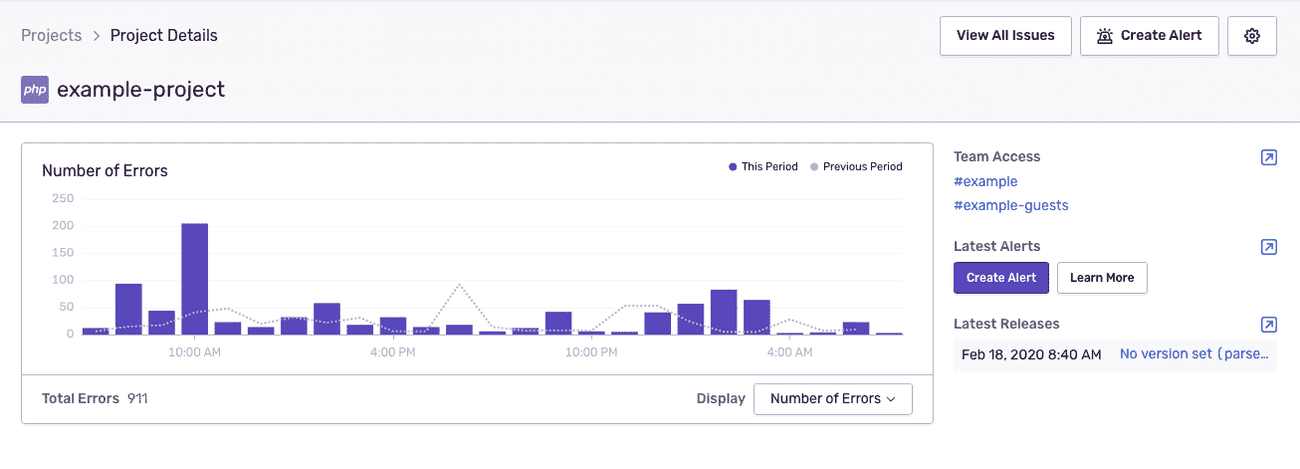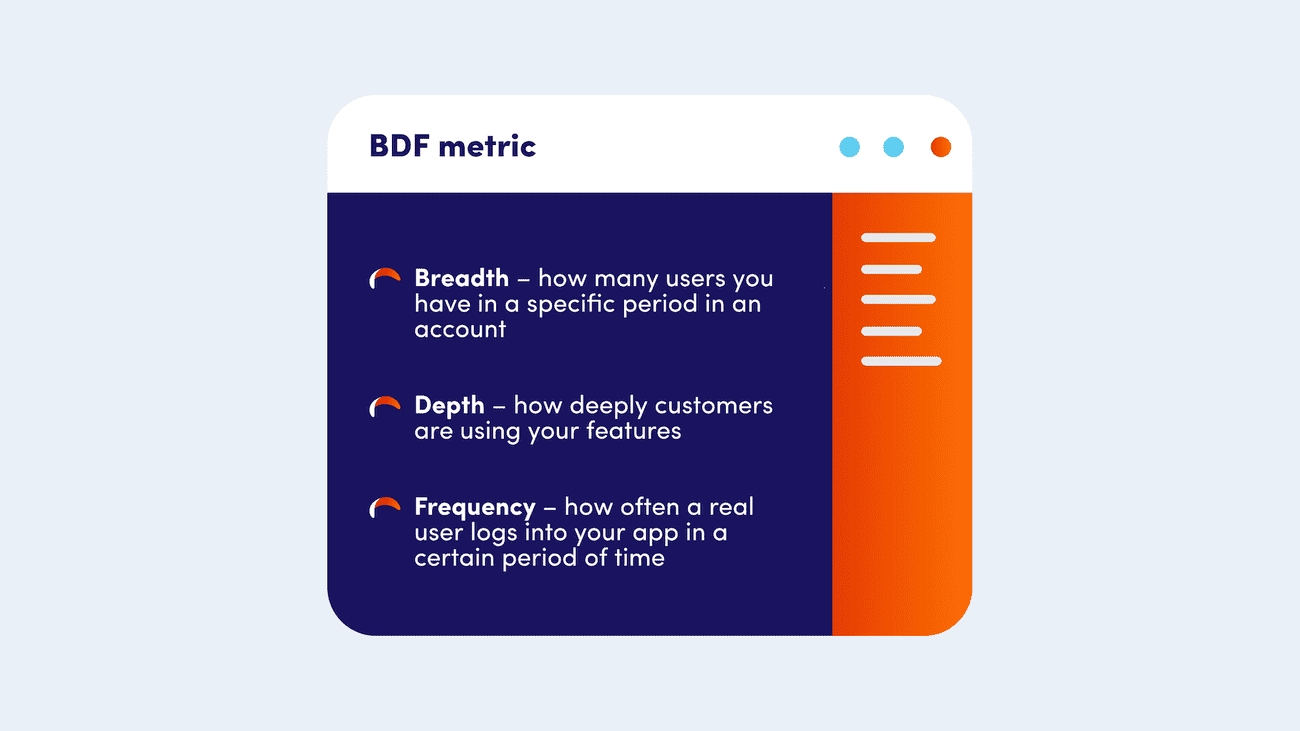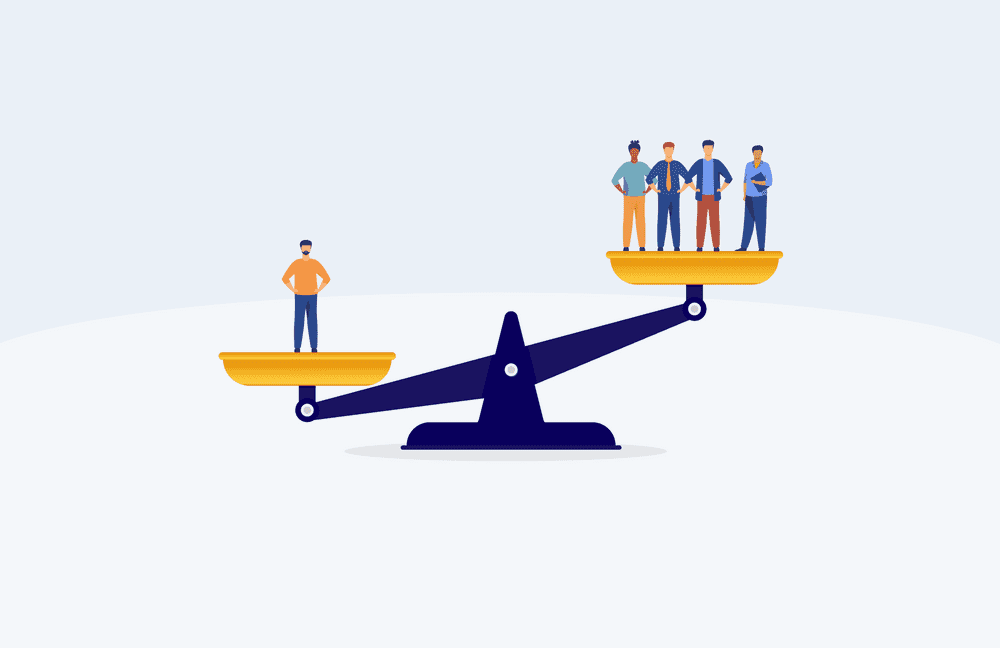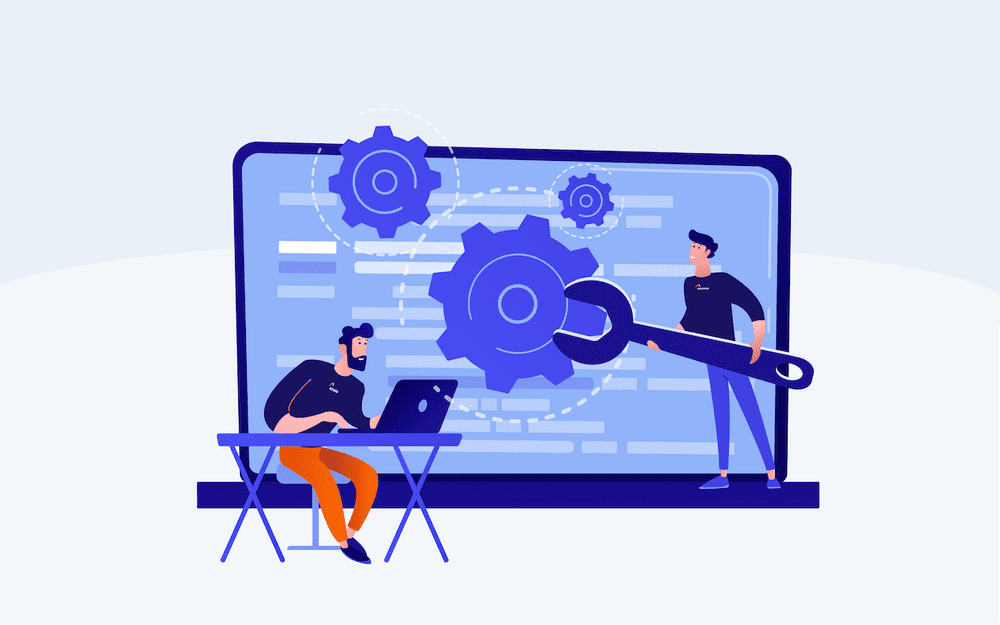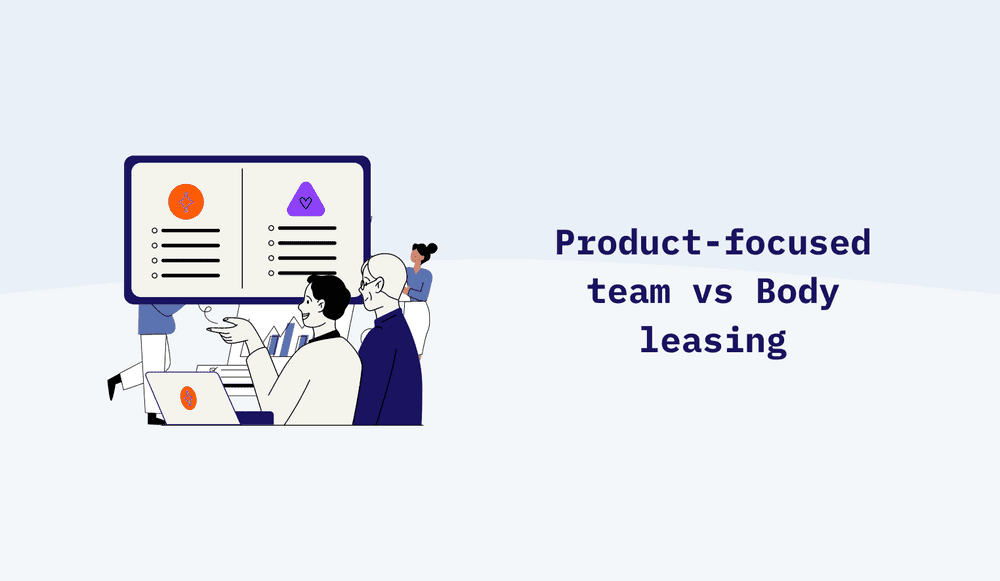SaaS monitoring - 6 things you should monitor to ensure your SaaS is healthy
Software as a service (SaaS) is a well-known type of service that gives businesses access to professional tools all over the world. Due to the popularity of such solutions and wide range of users, running a SaaS business comes with a lot of responsibility, not only regarding business turnover, but also on the user side.
The owners of the largest SaaS solutions take care of monitoring the applications to ensure proper application performance and safety. Many organizations still don't understand that not having the right monitoring strategy may negatively impact critical results.
There are two areas in which you can monitor your app: business (eg. LTV or CAC) and technical. In this article we will focus mostly on the technical side of SaaS monitoring like uptime, performance or SEO.
What could go wrong in my SaaS website? Technical issues that may take place
Due to website performance problems, even the best SaaS applications may come across performance issues. We need to remember that each web app is built in something, and there's whole bunch of code there that may cause page errors. For example, even a small change or typo can cause broken code.
Other things that the end users may notice are server errors, problems with hosting, update issues and general problems with your network. Even traffic spike may jeopardize your online presence when your website receives a sudden amount of traffic.
To ensure your actual users website availability, you need to see detailed alerts about your website's performance and monitor the right processes with the advanced monitoring tools. We will show you the best website monitoring tools and 6 things you can monitor to take your SaaS performance monitoring to the next level.
6 things you should watch with monitoring tools in your SaaS product
SaaS providers very often pay most attention to the business side of the project, forgetting that no technological solution is perfect. Imagine a situation where your company's services rely heavily on highly developed systems, and those systems start to screw up.
The smooth functioning of your website has a significant end user impact because your customers are there and conversion rates depend on a well structured customer service process on your business website. Even the minimal downtime, lower website speed or small server issues may cause lots of problems on the user side which leads to worse site availability. There are very useful, effective website monitoring services on the market that make website monitoring easier and let you receive advanced notifications whenever there are problems with the site.
1. Uptime monitoring
If you consider customer experience as something important for buyers in your SaaS business, then uptime is one of the critical things your company should take care of. It's an essential element of performance monitoring and can be defined as the time that a website is available. We measure it as a percentage and if nothing happens 99.999% of the time, it means that there is a high availability of the website.
Uptime monitoring is one of the critical processes when it comes to keeping an eye on the smooth operation. At the same time, it is very time-consuming as it requires constant monitoring of the application performance. Running a business, you can't sit in front of your computer all the time and refresh the page to make sure everything is ok. You need a solution that will be responsible for uptime monitoring.
Why is uptime monitoring important in SaaS monitoring?
All service providers know how important the smooth operation of an application is to its users. Whether our solution is working well or not, it has an impact on several important aspects that make our business grow. Let's look at a few arguments why uptime plays an important role in SaaS monitoring.
Uptime monitoring helps protect your professional image
There are many factors that influence how our business is perceived in the marketplace. One of them is how accessible the service is to the user at any time. Monitoring SaaS apps for application stability and continuous access helps protect the company's image, as customers judge each application by what they see and how it works.
Uptime monitoring saves your sales efforts
One of the primary goals of SaaS services is to generate sales. This is only possible if the service where the sale takes place is available to users. In a situation where SaaS owners do not use any infrastructure monitoring tools, they may not notice that the application stops working and users cannot make purchases. Therefore, any service provider that monitors the performance of its application can avoid losing potential customers.
Uptime monitoring affects end user experience
The goal of your SaaS application is to provide value to your users so that they can achieve results. If your app runs smoothly, people can feel that they have everything under control and be satisfied with using your solution. Controlling uptime gives you the confidence that you are sustaining the satisfaction of your users along with sustaining the performance of your application.
You can analyze monitoring data to discover security issues
Cybersecurity is an increasingly important danger on the web. New threats are taking on a whole new meaning in today's world and causing more and more companies to collect and analyze data.
Undoubtedly, threats arising from hackers can affect user experience and even lead businesses to lose users. Therefore, in addition to traditional performance metrics, it is becoming increasingly significant to monitor the stability of applications. Uptime monitoring allows companies to catch the moments when threats appear and thus give the possibility of quick reaction.
Uptime monitoring supports your presence in Google search
Every SaaS service provider knows that regardless of what monitoring solution you choose, without a presence on Google, your app may not get the business results you expect. And as we know, the giant from California has its requirements regarding what results it presents to its end users. Since Google undoubtedly wants to provide its users with an appropriate level of quality search results, it considers things like page speed and downtime when ranking sites. With Uptime monitoring systems you can be sure that the position of your SaaS services in the most popular search engine in the world will not be threatened.
Uptime Robot - one of the SaaS monitoring tools that make website monitoring easier
One of the useful SaaS monitoring tools you can use for website monitoring is Uptime Robot. It's a really reliable monitoring service that will help you keep your finger on the pulse of watching your web application.
The software, which comes in both free and premium versions, allows you to receive push notifications whenever your site is down. This not only lets you know that something has happened, but also allows you to react earlier before more serious glitches occur.
In the case of SaaS solutions, an important element that affects user security is SSL. Sometimes it happens that business owners neglect SSL monitoring, especially when they have a lot of other important issues on their mind. Using Uptime Robot, you can receive a notification before your certificate expires.
However, if Uptime Robot isn't enough for you, you can use a solution called Pingdom. It is a more advanced version of Uptime Robot.
It is also a good idea to configure your uptime/downtime notifications to use not only email or push but also to get alerts directly to Slack or any other tool you use for your messaging.
2. Server & database monitoring
Many times developers of business websites think that it's enough to put up a server with specific technical characteristics and the matter is settled. There is no need to worry because the server and its advanced features will avoid possible obstacles. Nothing could be further from the truth.
It is safe to say that the foundation for a well-functioning IT infrastructure is the proper functioning of servers. The data that is stored and processed on servers is the basis of SaaS applications. Since today's SaaS apps repeatedly need to send and receive thousands of requests simultaneously, the performance of servers is put to the test. A hard test.
Whether we're talking about desktop applications or mobile devices, every SaaS service provider needs to make sure that they have control over the performance of servers. It is also worth noting that there are different types of servers and not every solution fits to every type of server.
Also, database monitoring is important for application performance. Slow queries to the server often cause a negative impact on the overall performance of the application.
Why is server supervision critical for infrastructure monitoring?
We've already mentioned that proper server performance is important for keeping your infrastructure running smoothly. Therefore, server monitoring is part of the activities necessary to control the correct operation.
If a web server is running slowly, experiencing downtime or generating errors, the users of your application may become very irritated and stop using your solution. Generating errors on servers can also lead to corruption of critical data, resulting in loss of significant business information or even leakage of confidential data.
Apart from the above, server monitoring also helps to reduce the operational costs of the business and, of course, make optimization of the processes that affect the server.
Therefore, SaaS founders who want to monitor servers have deep visibility into processes, which is crucial to optimizing performance and protecting businesses against unwanted events.
Datadog – an infrastructure monitor that gives your company access to server and database performance monitoring
At Accesto, we use one of the monitoring systems that provides full stack visibility into the different processes that occur on the server. This well-built monitoring solution provides us with effective server load graphs and also shows us many other things that give deep visibility into server performance.
(source: https://www.datadoghq.com/)
For example, we can have an overview of requests that are sent to the server, how many tasks are queued, and if any server is underperforming and why.
You can also go into each process and see what is happening there. Additionally, the application has a log management feature – it allows you to go into the log files for a specific time and check if there are any performance issues.
Additionally, Datadog can monitor the database. You can watch the health and performance of your databases with query metrics. In the app you will find metrics such as average latency, total execution time and number of rows queried. Datadog has a user-friendly dashboard which shows you the full spectrum of data and allows you to quickly identify problems. Monitoring these things, you can make better decisions related to places for storing important data.
All in all, it's a nice solution that collects a lot of valuable information and lets your company keep everything in one well-organized place.
You can find this solution here: datadoghq.com
3. Error tracking – monitoring your SaaS for better user experience
There are different types of applications that run in various places: user's browser, mobile, server, and other devices. Each of these solutions usually cannot do without generating bugs as the application grows.
Even solutions like Microsoft Office, Facebook, and Twitter face an increasing number of potential bugs as functionality grows. As with database or server problems, the occurrence of bugs in an application has a real impact on the user experience.
Why it's important to monitor errors
Every major SaaS platform faces bugs from time to time, and basically every founder of this kind of business knows that software tests do not detect all errors. Yes, having a robust testing process is vital in a long-term software building strategy, but it can't detect all problems in the process.
Watching SaaS applications for bugs on an ongoing basis gives business teams the opportunity to catch important issues on the fly.
As you discover errors in software, you also gain experience and draw conclusions about potential problems. This allows you to identify certain patterns that can cause bugs. For example, using a JavaScript tag in a certain place may cause a 30% higher risk of errors. With such knowledge you are able to make the right decisions regarding both performance and security in your application.
Some bugs require immediate action because they have a sizable impact on people's decisions here and now. For example, if there is an error related to account creation, some potential users, discouraged by the inability to create an account, will abandon your solution. Therefore, tracking errors on an ongoing basis helps avoid losing new users.
Selling software as a service also requires in-depth insight into how the people using our solution think. Often, when a bug occurs, users don't want or don't have time to report it to developers. This causes not only frustration about the non-functioning application, but also the inability to react in a timely manner. This in turn may cause such a user to stop using the app.
The last important point is that bug tracking should be on the service provider side. We cannot expect finger-pointing from our users because we are responsible for the quality of the software.
Sentry – an app that helps you track errors for better user experience management
Sentry is a very useful solution that allows service providers to gather a lot of data for errors and log files. The application gives you a wide range of options for tracking various parameters. For example, you can see what error occurred, when it happened, how many times it took place, as well as what broke and how many users were affected.
4. User traffic monitoring
Building a business involves the need to expose our solution to numerous potential customers to gain as many paying users as possible. Because without people buying, there is no business. Many times, business founders focus heavily on what is happening inside the application so that they can interpret user behavior accordingly. However, they forget that it is not only what happens inside the solution that is important, but also what brings users to the solution from outside.
Why it's important to measure website traffic
Monitoring website traffic has a big impact on a number of aspects of running a business. It is an action that allows you to significantly expand the information about what is happening in the application, as well as better understand which of your actions bring the desired results.
Monitor the effectiveness of your marketing efforts – Someone once said that you can't manage something that you can't measure. Watching and analyzing your website traffic will help you know if your marketing efforts are having the appropriate effect. It will also support the management of the whole process of building your app's presence in the market.
See what really works – Every company uses specific methods to promote its business, as well as a particular set of tools to support these activities. Measuring traffic allows you to see which tools and sources work best for your product. This, in turn, translates into better business decisions.
Understand your users better – Building user engagement also involves understanding what these people like. If you know which pages users spend the most time on, how they navigate the site, and combine that with other parameters about the site's actions, you can then draw conclusions about specific patterns of user behavior. This knowledge will be useful for you in user engagement analysis.
Control potential risks better – Traffic monitoring can also be a great way to mitigate potential threats. For example, if you notice an increase in bounce rate on certain pages, it may be a sign that some functionality is not working or causing problems. So with this knowledge, you can remove the roadblocks that are standing in the way of your users.
Google Analytics - what you can measure on your website
Google Analytics is a tool that has invaluable capabilities in SaaS monitoring. Its immense capabilities make it possible to elaborate much more on what can be measured and what conclusions can be drawn. Below we will write briefly about what you should pay attention to.
Number of sessions
It's worth taking a look at the number of visits to the website in a specific time frame. For example, how many people visit your website per week or month. This way you can better assess to what extent your actions such as SEO or long-term organic actions bring results.
Defining channels
Review your dashboard regularly to get an idea of what sources your traffic is coming from. Is it organic traffic, paid campaigns, or maybe email. This will help you focus on the most valuable activities that will result in more visitors to your app.
Measuring Bounce Rate
Bounce rate is the number of visitors who leave your site after one visit. Measuring this rate is crucial. If people are leaving the site after a while, it could mean that, for example, the content is not interesting or users cannot find their way around the site.
5. Customer success & user engagement
User engagement and customer success in an application are absolutely some of the most important factors for the success of a SaaS application. This is because people and their needs are the reason why a solution is created. Are your users getting the right value from your app? Here is a useful three–part metric (BDF) you can use to optimize your users' experience.
Breadth
The first of these metrics is Breadth. This is a metric that shows how many users you have in a specific period in a specific account. This is an important metric because it clearly indicates how sticky your product is. It also helps to reduce churn rate – the rate at which people leave your app.
Depth
Many times, SaaS applications consist of countless different functionalities. Sometimes it turns out that users use only a few of them and the rest is not used. So, it's worth looking at how deeply customers are using your features. Do they use all the things, or maybe they use only basic features? By observing users' behavior, you can figure out if all the features are needed. It can also be a signal for you that some of them need changes.
Frequency
A very valuable piece of information for you is how often a real user logs into your app in a certain period of time. Take a look at how frequently they visit your app: does it happen at any specific, regular intervals, such as weekly or monthly? This will help you figure out if your service is providing them with enough value and reason to visit your app often.
If you want to find out more about other useful user engagement metrics, check our article User Engagement Metrics every successful SaaS should measure.
6. SEO monitoring
For most businesses, a high search engine position on Google has always been a huge value that translates directly into sales results. Therefore, companies make great efforts to appear and stand out in today's quite competitive business environment. As such, the concept of SEO has taken on a new meaning in today's world and is often the secret weapon of the most successful businesses.
Position in Google search results
One of the most important performance indicators is the position of our brand in search results for specific phrases. To check this, you can use several ways:
Manually checking the position - this way of checking is the most popular, but also quite time-consuming. The method is simple - you type the chosen word or phrase in Google and check the results. It is worth remembering to log out from all Google tools and applications and to turn off the GPS location before starting the search. Otherwise, the results may differ from reality.
We should emphasize one thing here. Google adapts the results to the user's preferences, so manual checking does not give fully reliable results. Thus, it is not a method on which you can base a long-term SEO monitoring strategy.
Google Search Console – This is, of course, a tool provided by Google itself (link). The solution helps to easily determine an average position of the page in the time frame we have chosen. Using GSC, you can check the position of individual keywords on which your website is positioned. Apart from that, you can also check the position of your website with an average of places for particular keywords, for which the website is displayed in Google. Of course, Google Search Console is a tool that has more features, so it's good to check it from other angles as well.
Popular SaaS SEO toolsets - There are many cloud platforms dedicated to SEO. Among most popular ones are Screaming Frog and SEMrush. Both are powerful and combines multiple various tools and features that allows comprehensive approach to your product SEO. Downside is the price, while Google Search Console is available for free, tools like ScreamingFrog or SEMrush are quite expensive. Eg. SEMRush starts from $99 / month (as of 2022) and allows you to track up to 500 keywords. Make it 5000 keywords and it will cost you $450 every month 💸
Other things that may support your SEO – Core Web Vitals
There are other aspects related to what kind of experience a user has on your site. In 2001, Google introduced several metrics that are based on what we call Web Vitals. This is a set of metrics by which you measure things like page upload length and page availability. The three metrics, called Core Web Vitals, are the following:
- LCP stands for Largest Contentful Paint
- FID means First Input Delay
- CLS refers to Cumulative Layout Shift
If you'd like to read more useful tools for measuring Core Web Vitlals, you can check 5 tools for Core Web Vitals to measure and improve website UX
Final thoughts
SaaS monitoring is a pretty broad concept, and to get the best results, you need to focus on the right metrics related to what's happening in your application. Regularly looking into database performance, verifying the stability of our application, or monitoring for errors is something that will help you focus on what's important. With this approach, you can make more informed and precise decisions regarding the development of your app.




